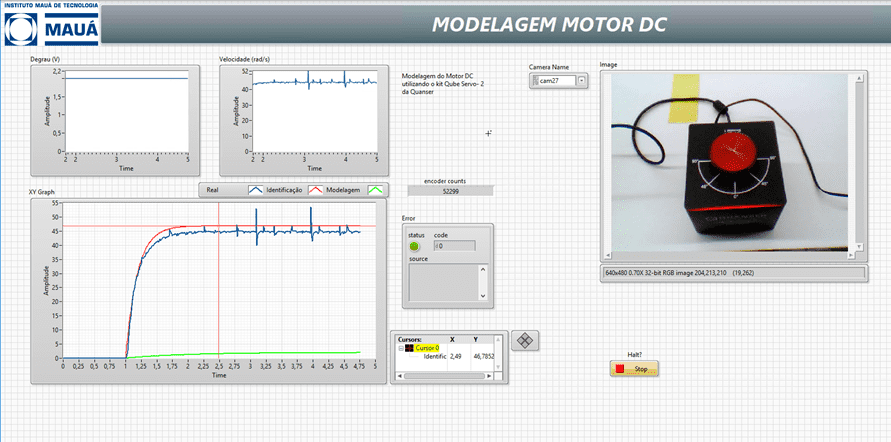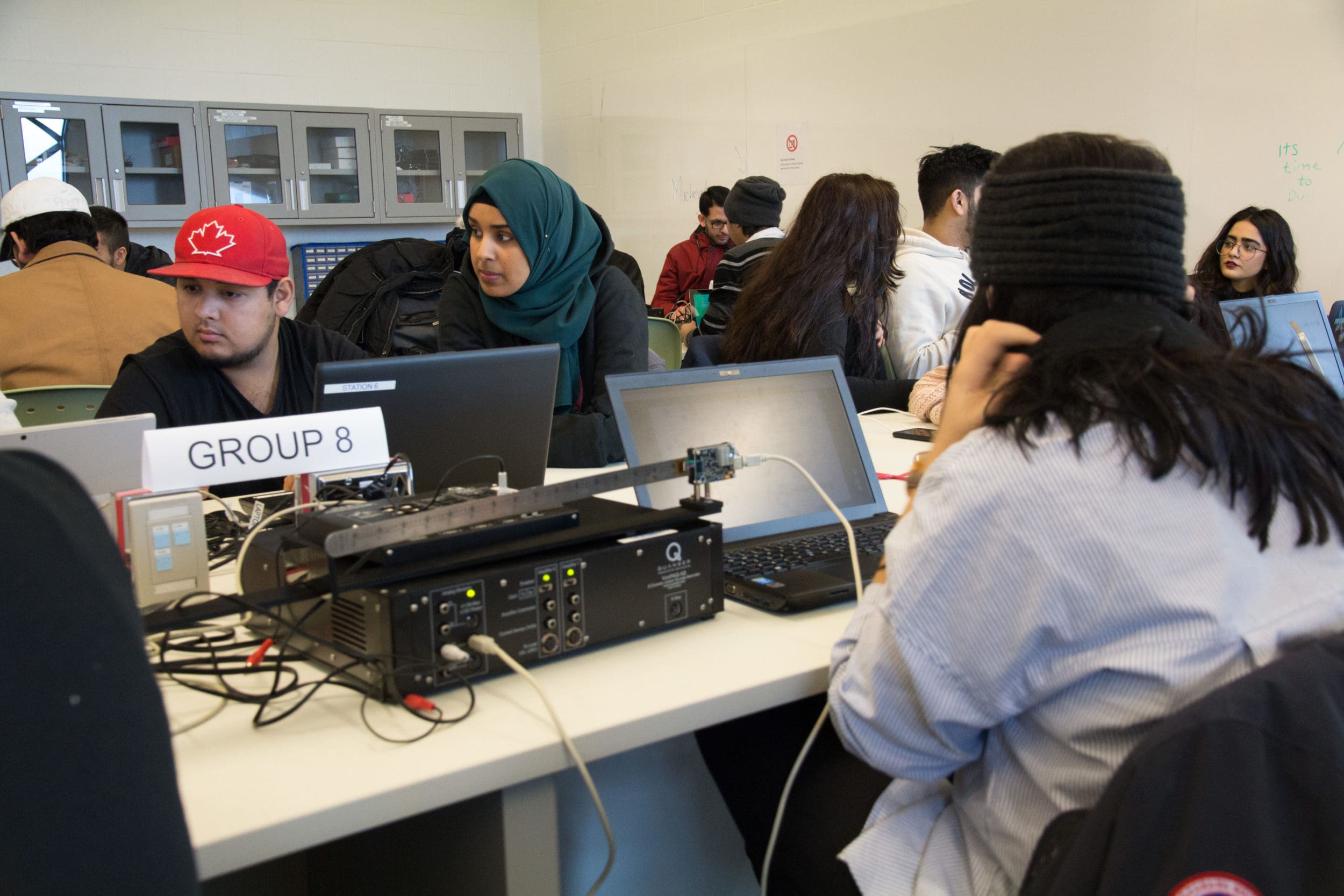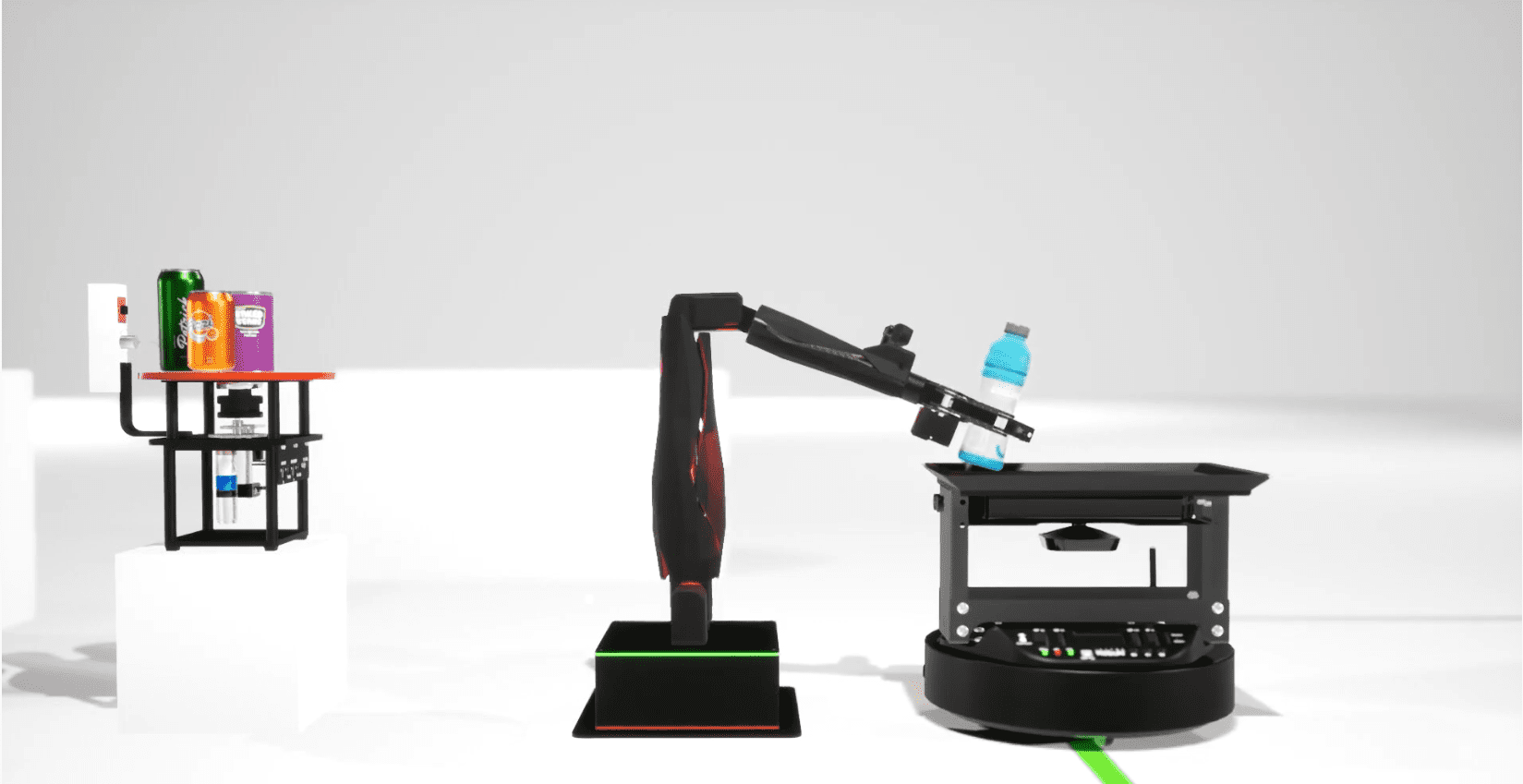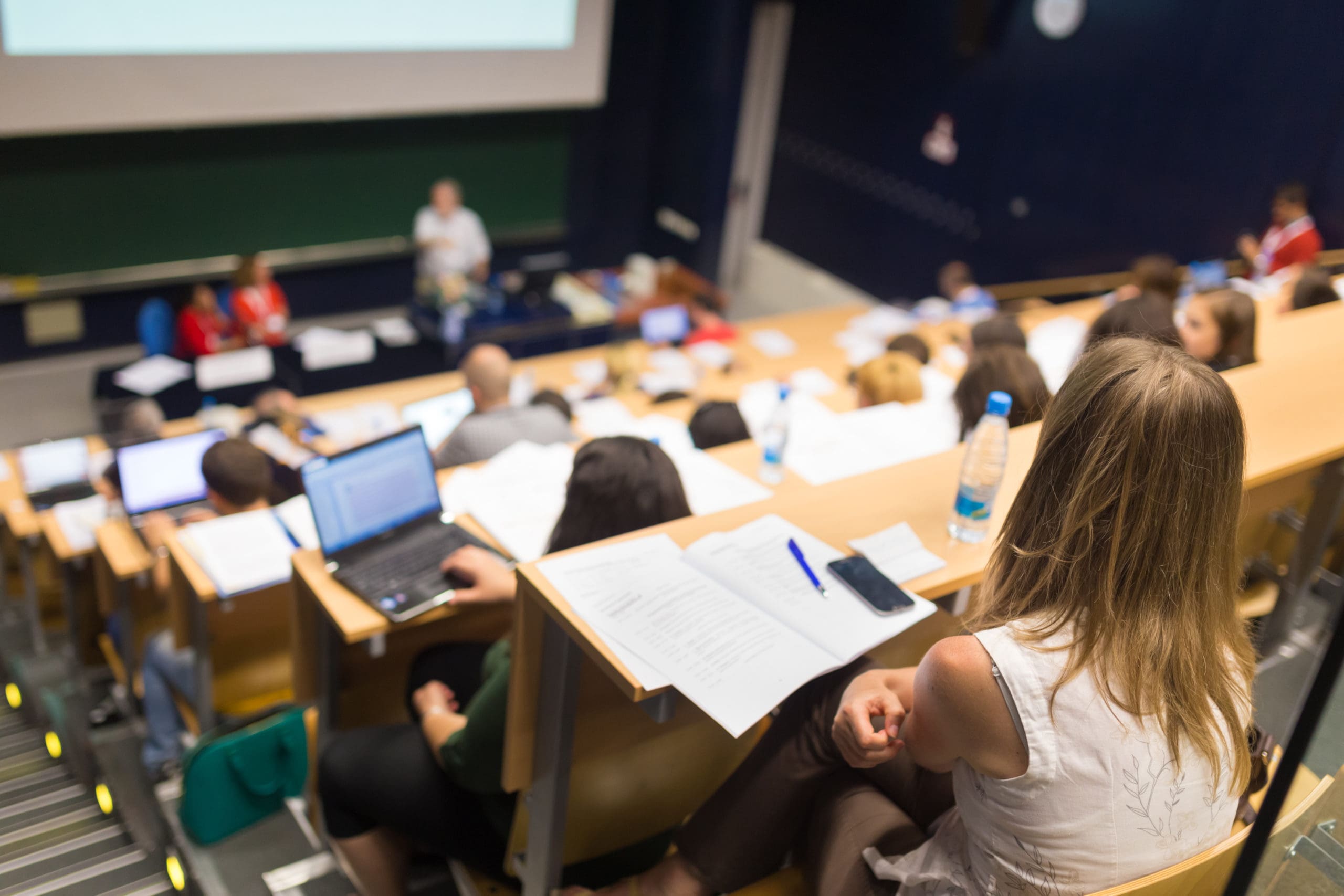
The crossroads between technology and education can be a difficult one, especially for engineering or other STEM educators. A lot of great research has been done investigating the effectiveness of different educational technologies, however much of what exists pertains to non-technical education, or elementary and high school students. How are we supposed to integrate technology into the controls course, and more importantly, do it the right way?
Why Technology?
I’ll start by trying to convince you that technology has its place in the lecture. I use the word convince because, even though you probably already use PowerPoint slides or clickers, some people still have some preconceived notions about which types of technology are appropriate in the lecture. For example, if you saw a student spending a large amount of time in a lecture on their laptop you may assume that they’re just taking notes. But if that same student was on their phone, you might assume that they’re not paying attention (even though they’re both computers!). I believe we need to ditch some of these ideas surrounding technology appropriateness if we want to evolve the way we teach.
The Three T’s
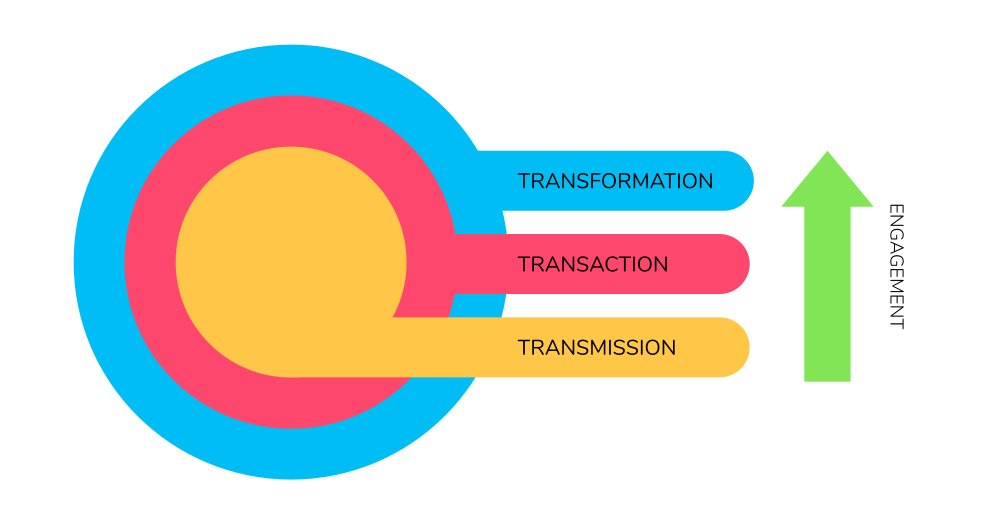 Before we dive into the why and how, let’s discuss the what. One of the more common views of teaching is the idea that teaching can be broken down into three types of activities: teaching as transmission, teaching as transaction, and teaching as transformation (Johnson, 2015).
Before we dive into the why and how, let’s discuss the what. One of the more common views of teaching is the idea that teaching can be broken down into three types of activities: teaching as transmission, teaching as transaction, and teaching as transformation (Johnson, 2015).
Teaching as Transmission
This is the teaching view that is the least engaging to the student, and unfortunately, the one that most people envision when thinking about a lecture. This category defines teaching as the act of transmitting knowledge from one point to the other, most commonly from the head of the teacher to that of the student. Students merely need to be present for the transmission to take place, and be able to regurgitate that knowledge in an exam to be considered proficient.
Teaching as Transaction
A more student-focused teaching type is teaching as transaction, where learners are given the opportunity to interact with activities and people that relate to the material. This type of teaching is rooted in constructivism, where students’ past knowledge, backgrounds, and experiences are used to give meaning to the material. In this view, students are not just receiving information but are also interpreting it and applying it to situations outside of the subject matter.
Teaching as Transformation
The most holistic approach to teaching is transformational. This view goes beyond the student’s own experience and adds meaning through the perspectives of others and the environment as a whole. It’s a more student-centric approach in that achievements are not necessarily defined by an instructor. Instead, instructors act as guides for students as they move through what is ostensibly their own version of an education.
It’s clear that as the education moves out from transmission through to transaction and transformation, the student becomes more engaged in the learning, which is widely considered a key factor in a student’s academic success. The argument for technology in the lecture then is that we can’t achieve transactional and transformational learning without heavily relying on the technological tools of the present.
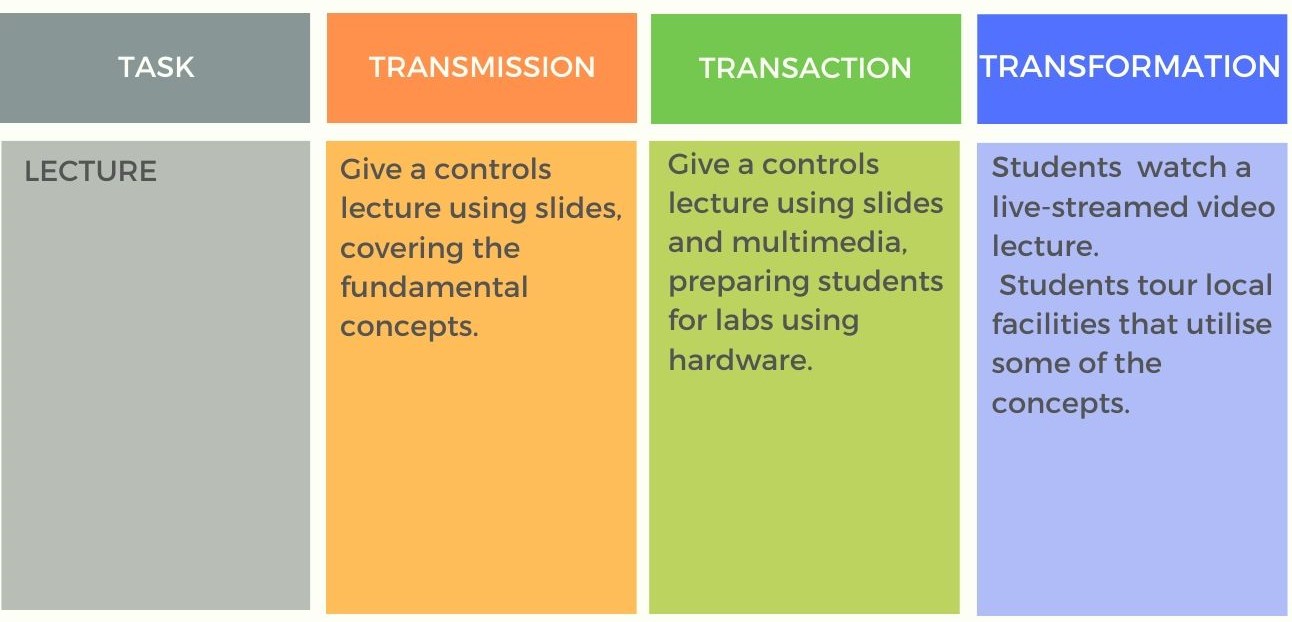
Staying Comfortable
When integrating new tools into the teaching practice, it is very important that we do it in a way that feels familiar to us, especially in the beginning. I am generally all for big changes in the way that engineering education is taught, however, I do understand the practical challenges that come with changing everything all at once. The approaches that I’m going to discuss will contribute to a gradual adoption of more and more technology into the course, where you can stop at the point that makes sense for your institution and students. You can also use the three T’s to guide yourself through some of the technologies and examples that align with your teaching practices.
Bit by Bit
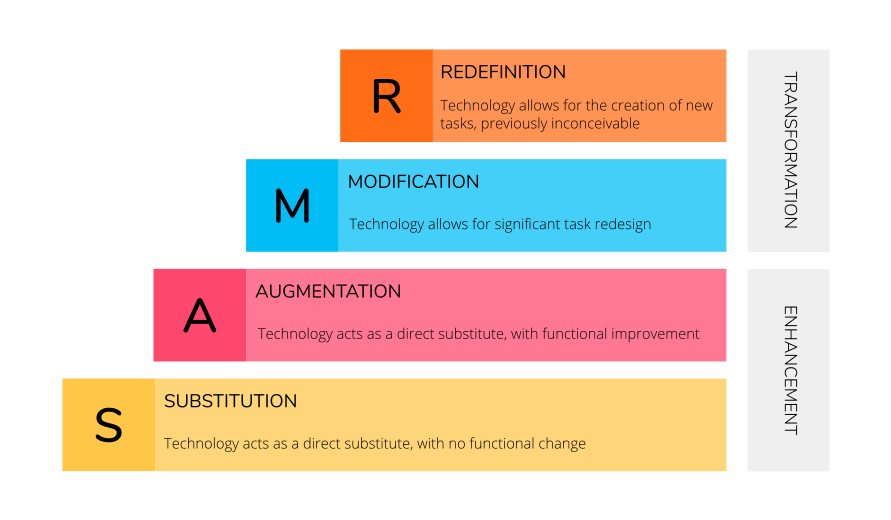 Let’s start with an introduction to something called the SAMR model, an approach to technology adoption developed by Dr. Ruben Puentedura to conceptualize how technological tools could be integrated into the classroom. The model consists of four levels of technology adoption: Substitution, Augmentation, Modification, and Redefinition. The first two levels focus on enhancing your current educational practices with technology, with the last two levels geared toward a total transformation of the learning tasks.
Let’s start with an introduction to something called the SAMR model, an approach to technology adoption developed by Dr. Ruben Puentedura to conceptualize how technological tools could be integrated into the classroom. The model consists of four levels of technology adoption: Substitution, Augmentation, Modification, and Redefinition. The first two levels focus on enhancing your current educational practices with technology, with the last two levels geared toward a total transformation of the learning tasks.
Substitution
The first method of technology adoption is substitution, where technology is used as a direct substitute for something else, with no functional change in the way things are done. This is most likely something that you and most other educators are already doing, like using an overhead or slides in place of chalk and a blackboard. From a student perspective, this could extend to using a laptop in place of paper and pen for notetaking.
Augmentation
The next step in enhancing education with technology is augmentation, which takes substitution a step further through functionally improving an old task using technology. An example would be incorporating something like a video into your slide deck.
Modification
After enhancement using substitution and augmentation, the first step in transforming the teaching practice is through modification. Modification entails a functional change in the task, something that would not be possible without technology. So instead of a PowerPoint slide with embedded videos, you may give your lecture as a video or podcast that the students can listen to before class.
Redefinition
The final stage of technological transformation is redefinition, where the task is completely reimagined in a way that would not be possible without the use of technology. For example, the traditional lecture is replaced by a collection of multimedia lectures in the form of videos and podcasts presented by yourself and lecturers at other institutions.
Let’s look at a few tasks and how they may change as more technology is included in the course.
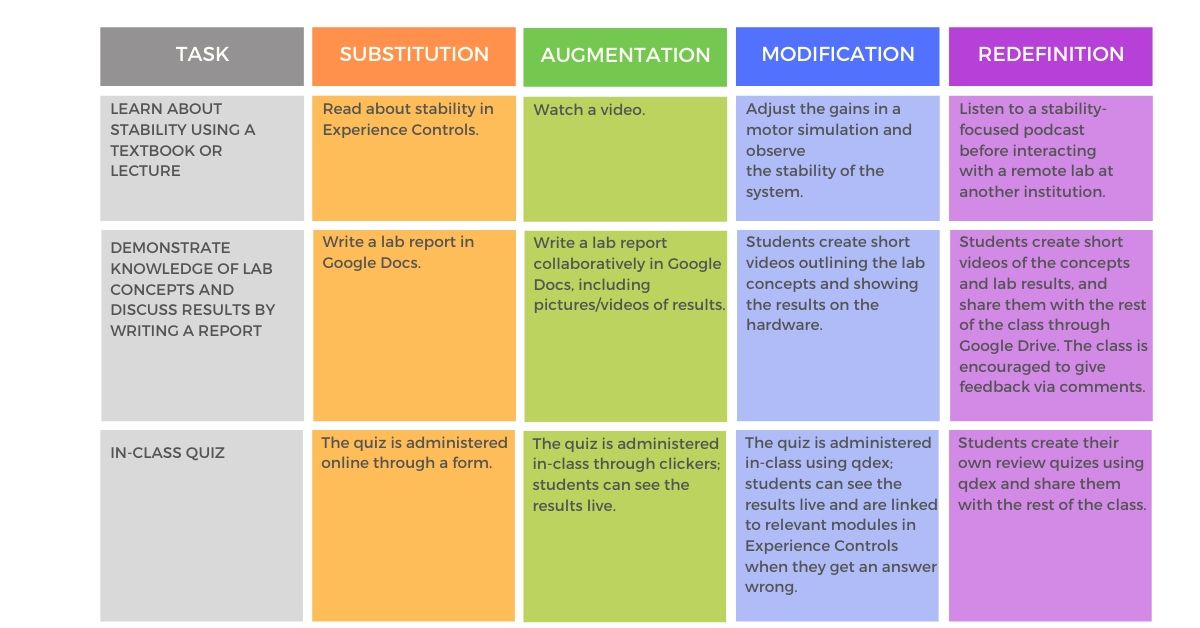
It doesn’t have to be difficult to increase engagement by adopting new technologies into your teaching practice. Taking it slowly and aligning the technologies you use to the way that you like to teach ensures that both you and your students reap the benefits.
